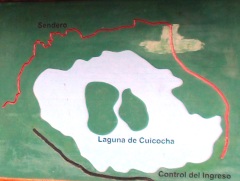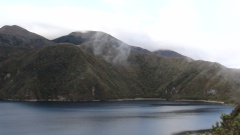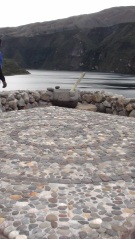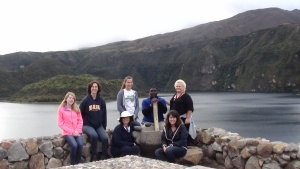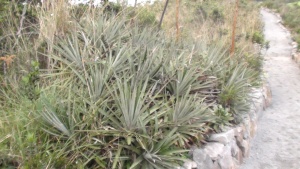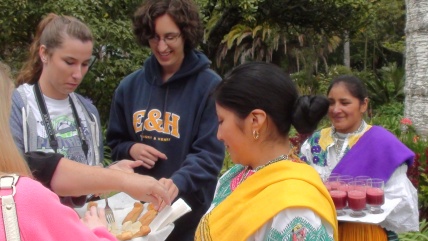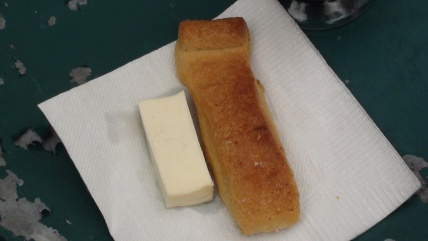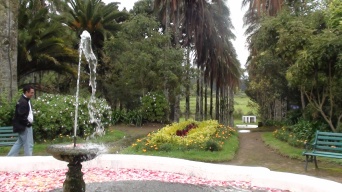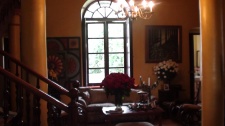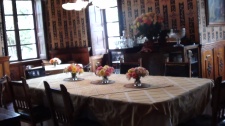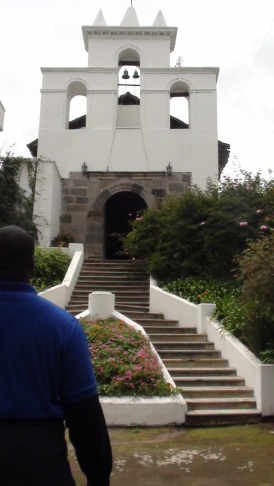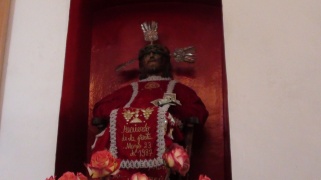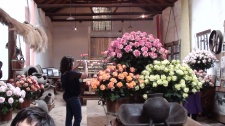The next city we visited on our tour of northern Ecuador was Cayambe. Cayambe is 1 hour north of Quito, located in the Imbabura Provence of Ecuador. While there we toured the Rosadex rose plantation.

Ecuadorian rose plantations grow 400 different varieties in Ecuador, Rosadex concentrates on seven varieties. Rosadex plantation has 120 km of green houses, where they grow a variety of roses. The company sell roses in the American, Russian, & European markets. Rosadex has 270 workers, 70% of them are female. The company has a clinic and nursery on the plantation grounds to support their primarily female workforce.

While visiting the plantation I learned a great deal about growing roses and their importance in the Ecuadorian economy. I was surprised to learn that roses are a main source of the Ecuadorian economy. Ecuador’s climate is good for growing roses because there is 12 hours of sunlight year round, humidity levels are conducive for growing roses, and the highland region has extremely fertile soil. To grow 1 hectare of roses is a $300 thousand dollar investment. It is so costly because the process is labor intensive, all of it done by hand.
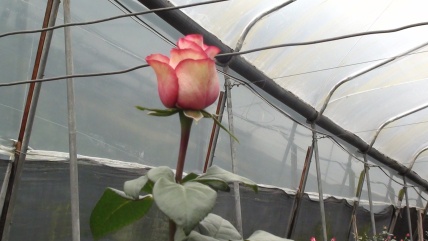
I also learned a great deal about the global rose market in general. European consumers like small buds and long stems on their roses. In contrast, US consumers like large buds and shorter stems. Russian consumers like both. Rosadex can ship roses within 15 days to the Russian market and between 24-48 hours to the US market. This means that they can cut when the buds are more open for the US market than those shipped to the Russian market.

Growing roses requires attention to detail on many different levels. Different varieties of roses cannot be grown in the same green house because temperature and UV filters are different for each variety. Rosadex uses a drip irrigation system with drip pipes along the beds. They fertilize the roses through these too. The main fertilizers used in growing their roses are calcium and magnesium.
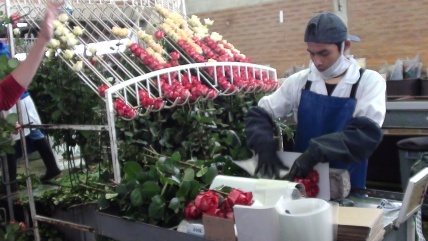
After our tour of the greenhouses we visited the sorting room. Roses are cut straight across the stem to stop the blooming process. When a florist gets them (or customer) they should be cut on a diagonal to restart the blooming process. Roses should then re-cut on an opposite diagonal every 2 days to maximize the life of the rose. Roses need to be kept cold or it will restart the blooming process.

After a rose is cut, it must sit in tanks with special nutrients in them for at least 4 hours. This allows the rose to last 15 days, if this step is skipped, the rose would only last 2 days. Once the roses have soaked, they are then classified by stem length and bud size.

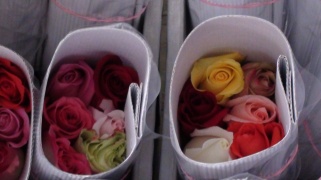
The roses can then be bundled into bunches of 25. Yes, that’s right 25, not 12. These bundles are sold to wholesalers and florists who then separate them into smaller units. Smaller, ready to sell bunches are bundled and sent to supermarkets as well.

Each bundle is bar coded – it contains all the information on those roses – who cut it, size of the rose, variety, where they are going. Once a rose is cut it can only stay at the plantation for up to 3 days, if it remains in the facility longer it cannot be exported and will be taken to the local market instead. In Europe 1 rose costs 3-6 Euros, in the local market you can by 2 dozen for between 1-3 dollars.
